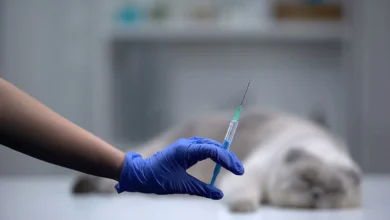
Investing in pet insurance for young pets is a topic that many pet owners grapple with. While some argue that it’s an unnecessary expense, others believe it provides essential peace of mind. In this article, we will delve into the various aspects of pet insurance for young pets, analyzing its benefits, potential drawbacks, and financial implications.
Understanding Pet Insurance
Pet insurance operates similarly to human health insurance. It involves paying a monthly premium to an insurance provider, who, in return, covers a portion of veterinary expenses. Coverage can vary widely, from accidents and illnesses to routine care and wellness visits.
Types of Pet Insurance Coverage
- Accident-Only Policies: These policies cover expenses related to accidents such as fractures, burns, or poisoning.
- Accident and Illness Policies: These provide coverage for both accidents and illnesses, including chronic conditions and diseases.
- Comprehensive Policies: These offer extensive coverage, including accidents, illnesses, and preventive care such as vaccinations and dental cleanings.
The Financial Perspective
Initial Costs vs. Long-Term Savings
When considering pet insurance for young pets, it’s essential to weigh the initial costs against potential long-term savings. Premiums for young pets are typically lower, making it an attractive option to start early.
Case Study: Average Costs
Let’s examine a hypothetical scenario. A young pet owner pays an annual premium of $300. Over ten years, they would spend $3,000 on premiums. However, a single emergency surgery costing $5,000 could be significantly offset by insurance coverage, demonstrating potential long-term savings.
Financial Protection
Pet insurance can provide financial protection against unexpected veterinary bills. Young pets, despite being generally healthy, are still prone to accidents and sudden illnesses. Insurance can mitigate the financial strain of these unforeseen events.
Health Benefits for Young Pets
Early Detection and Treatment
With comprehensive pet insurance, routine check-ups and preventive care are often covered. This encourages pet owners to take their pets for regular veterinary visits, promoting early detection and treatment of potential health issues.
Improved Quality of Life
Regular veterinary care facilitated by insurance can lead to a better quality of life for young pets. Preventive measures, timely vaccinations, and dental care are crucial components of maintaining a pet’s overall health.
Case Examples
Consider a young dog diagnosed with hip dysplasia. Early intervention, covered by insurance, can significantly improve mobility and quality of life, preventing more severe issues later in life.
Potential Drawbacks
Coverage Limitations
Not all pet insurance policies are created equal. Some may have limitations, such as breed-specific exclusions or caps on certain types of treatments. It is crucial to read the fine print and understand what is and isn’t covered.
Pre-Existing Conditions
Most pet insurance policies do not cover pre-existing conditions. Therefore, insuring a pet early, before any health issues arise, is advisable to ensure comprehensive coverage.
Cost vs. Benefit Analysis
For some pet owners, the cost of premiums may outweigh the benefits, especially if their pet remains healthy throughout its life. It’s essential to conduct a cost vs. benefit analysis based on individual circumstances.
Making an Informed Decision
Assessing Your Pet’s Needs
Every pet is unique, and their insurance needs may vary. Factors to consider include breed, age, health history, and lifestyle. High-risk breeds or pets with known health issues may benefit more from comprehensive coverage.
Research and Comparison
Thoroughly researching and comparing different pet insurance providers is crucial. Look for policies that offer the best balance of cost, coverage, and customer service. Reading reviews and seeking recommendations can provide valuable insights.
Consulting with a Veterinarian
Veterinarians can offer expert advice on the types of coverage that would be most beneficial for your pet. They can also help identify any potential health risks that may influence your insurance decision.
Conclusion
Deciding whether to invest in pet insurance for young pets involves careful consideration of various factors. While it can provide financial protection and promote better health for your pet, it’s essential to weigh the costs against the potential benefits. Conducting thorough research and consulting with professionals can help you make an informed decision that ensures the well-being of your beloved pet.
Investing in pet insurance for young pets is a proactive step towards ensuring their health and happiness. By understanding the nuances of pet insurance, you can make a choice that aligns with your pet’s needs and your financial situation.
FAQ: Pet Insurance for Young Pets
1. What is pet insurance and how does it work?
Pet insurance is a type of health coverage for pets that helps offset the cost of veterinary care. Pet owners pay a monthly premium, and in return, the insurance company reimburses a portion of the vet bills for covered services, such as accidents, illnesses, and preventive care.
2. Is pet insurance necessary for young pets?
While young pets are generally healthy, pet insurance can provide financial protection against unexpected accidents and illnesses. It also encourages routine check-ups and preventive care, which can contribute to a pet’s long-term health.
3. What types of pet insurance policies are available for young pets?
There are several types of pet insurance policies:
- Accident-Only Policies: Cover costs related to accidents.
- Accident and Illness Policies: Cover both accidents and illnesses.
- Comprehensive Policies: Include accidents, illnesses, and preventive care like vaccinations and dental cleanings.
4. How much does pet insurance for young pets typically cost?
The cost of pet insurance varies based on factors like the pet’s breed, age, and location. Generally, premiums for young pets are lower, ranging from $20 to $50 per month for comprehensive coverage.
5. What factors should I consider when choosing a pet insurance policy for my young pet?
When choosing a policy, consider the following:
- Coverage: Ensure it includes necessary treatments and preventive care.
- Exclusions: Check for breed-specific or condition-specific exclusions.
- Deductibles and Reimbursement Rates: Understand the out-of-pocket costs.
- Customer Reviews: Research the provider’s reputation and customer service.
6. Does pet insurance cover pre-existing conditions?
Most pet insurance policies do not cover pre-existing conditions. It’s advisable to insure pets early before any health issues arise to ensure comprehensive coverage.
7. Can I use any veterinarian with pet insurance?
Most pet insurance providers allow you to visit any licensed veterinarian, including specialists and emergency clinics. However, it’s essential to confirm this with your specific provider.
8. What are the benefits of getting pet insurance for a young pet?
Benefits include financial protection against unexpected vet bills, encouragement of regular veterinary visits, early detection and treatment of health issues, and peace of mind knowing that your pet’s health is prioritized.
9. Are there any drawbacks to getting pet insurance for a young pet?
Potential drawbacks include monthly premium costs, coverage limitations, exclusions, and the possibility of not using the insurance if the pet remains healthy. It’s crucial to evaluate the cost-benefit ratio based on your pet’s health and lifestyle.
10. How do I file a claim with my pet insurance provider?
To file a claim, typically, you need to pay the vet bill upfront, submit a claim form along with the invoice to your insurance provider, and wait for reimbursement. Each provider has specific procedures, so it’s important to familiarize yourself with them.
By understanding these common questions about pet insurance for young pets, you can make an informed decision that best suits your pet’s needs and your financial situation.




One Comment